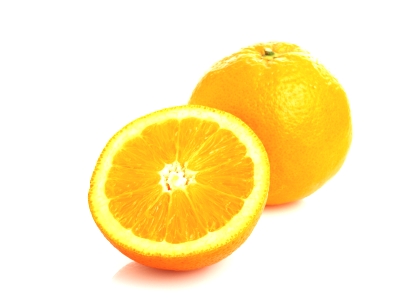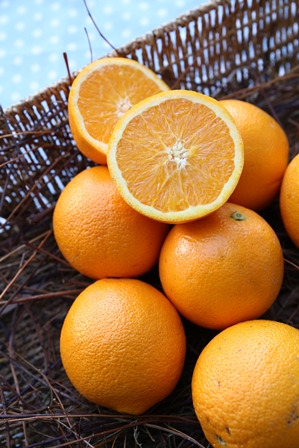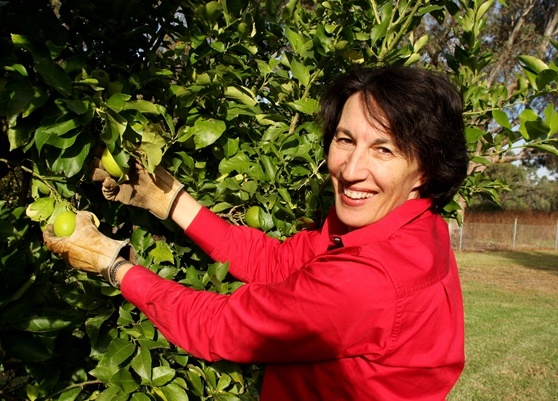What is Vitamin C (ascorbic acid)?

From curing the common cold to fighting off cancer, vitamin C (ascorbic acid) has been under study for many different health problems. Chemically known as ascorbic acid, it is a water-soluble nutrient found largely in vegetables, salads, fruits and juices. It cannot be stored and exits the body via your urine. It first came to light in the mid-1700s when the British navy were searching for a treatment for scurvy, a terrible condition that plagued many of their sailors on long ocean voyages without access to anything fresh for weeks or months.
Most animals produce their own vitamin C, but humans (and guinea pigs) cannot. For this reason, humans must eat ample amounts of vitamin C every day. Here's how:
What does vitamin C do in the body
- Keeps gums, teeth and bones healthy
- Speeds up the healing of cuts and wounds
- Helps resist infection and boost your immunity
- Needed for the formation of collagen, a cementing material in blood vessels, bones and teeth
- Boosts the absorption of non-haem iron from vegetables and grains eg combine orange juice with your wholegrain breakfast cereal
- Vitamin C is a powerful antioxidant - its main job appears to regenerate vitamin E and inhibit the formation of carcinogenic nitrosamines in the stomach.
Free radicals are compounds formed when our bodies convert the food we eat into energy. People are also exposed to free radicals in the environment from cigarette smoke, air pollution, and ultraviolet light from the sun.
How much do I need?
 The Recommended Dietary Intakes for vitamin C per day are:
The Recommended Dietary Intakes for vitamin C per day are:
(NHMRC Australia 2006):
26 mg for babies (0 to 6 months) AI
30 mg for babies (7 to 12 months) AI
35 mg for children (1 to 8 years)
40 mg for children (9 to 18 years)
45 mg for adults (19 to 70+ years)
55-60 mg for pregnant women
80-85 mg for breastfeeding women.
mg means milligrams
If you smoke, add an additional 50 mg of vitamin C to the above figures.
Safe upper limit for vitamin C
Stick to 1000 mg – this is a prudent limit although many people take more eg 2000 mg (2 grams) to 3000 mg (3 grams) as supplements during winter. There doesn't appear to be significant side effects and how much you consume will be limited by diarrhoea and upset stomach.
Best food sources
Vitamin C is found in a wide range of fresh fruit and vegetables, the most widely consumed being the citrus fruit and their juices (orange, mandarin, grapefruit, lemon, lime, tangelo). However many other fruit and vegetables have a higher concentration weight for weight and it's worth seeing how many of these you can fit into your daily meals.
My Top 20 sources
Concentration by weight per 100 g listed in descending order:
- Guava
- Blackcurrant juice
- Capsicum, red, raw
- Chili powder
- Orange peel
- Lemon peel
- Broccoli, raw
- Watercress
- Parsley, raw
- Chinese cabbage, cooked
- Brussels sprouts, cooked
- Kale, cooked
- Kiwifruit
- Cauliflower, raw
- Cabbage, red, raw
- Grapefruit juice
- Paw-paw, raw
- Lemon juice, home-squeezed
- Basil, raw
- Oranges, raw
Source: Foodworks 2009
Prolonged heating destroys a lot of the vitamin C in fresh produce so it pays to cook your veggies lightly (steam or microwave is the kindest) and eat plenty of fresh fruit and raw salads.
Many juices have added vitamin C so you can use these to top up your intake from fresh food.
Easy ways get your recommended day's intake of 45 mg (figures in mg):
| Eat an orange as a snack | 70 |
| Buy a freshly-squeezed juice 300 mL | 100 |
| Make a Greek salad with tomato 45, capsicum 95 and parsley 30 | 170 |
| Have fresh strawberries 50 for dessert with ice-cream or yoghurt | 50 |
Deficiency signs
- Fatigue
- Loss of appetite
- Greater susceptibility to infections, colds, sniffles, run down easily
As vitamin C deficiency progresses:
- Delayed healing of cuts and wounds
- Diseased and bleeding gums
- Loss of teeth
- Weak bones
- Mental confusion, irritability
- Haemorrhages, bruising and blood clots under the skin
- Scurvy and death
Vitamin C facts
- Scurvy is the serious disease resulting from the deficiency of vitamin C, the symptoms of which start with swollen and bleeding gums, bruising and lethargy.
- The term 'scurvy' for the disease resulting from prolonged vitamin C deficiency had origins in 'scorbutus' (Latin), 'scorbut' (French), and 'Skorbut' (German). Scurvy was a common problem in the world's navies and is estimated to have affected 2 million sailors.

- British naval surgeon James Lind is revered as the first doctor to conduct systematic clinical trials of potential cures for scurvy. In 1747, Lind selected 12 men from HMS Salisbury, all suffering from scurvy. He divided them into six pairs, giving each group different additions to their basic diet. Those fed citrus fruits – lemons and oranges - experience a remarkable recovery.
- British influence in the Caribbean in the late 1800s lead to the use of limes over lemons and oranges, since limes were more available. British sailors become known as 'limeys', which refers to the practice of supplying rations of lime juice to British sailors to prevent scurvy.
- Humans are one of a few groups of animals that are unable to make their own vitamin C (the guinea pig is another animal that can't make its own vitamin C).
- Nobel Prize winner Linus Pauling was the first to propose a role for vitamin C in protection against colds and flu. Many studies since then have not been able to prove that vitamin C actually prevents colds and flus. Today most opinion supports that it can lessen the length and severity of a cold (around 500mg per day).
- Low intakes of vitamin C from food have been associated with an increased risk for many forms of cancer including the stomach, mouth, oesophagus, pancreas and cervix.
- Some studies suggest that people who eat high levels of vitamin C may be less likely to suffer cataracts in later years.
If you have a lemon or orange tree, count yourself lucky. Here’s me checking out the lemons growing at Mendooran in country NSW.
Download my free Fact Sheet on
pdf
Juices and Juicing
(464 KB)





